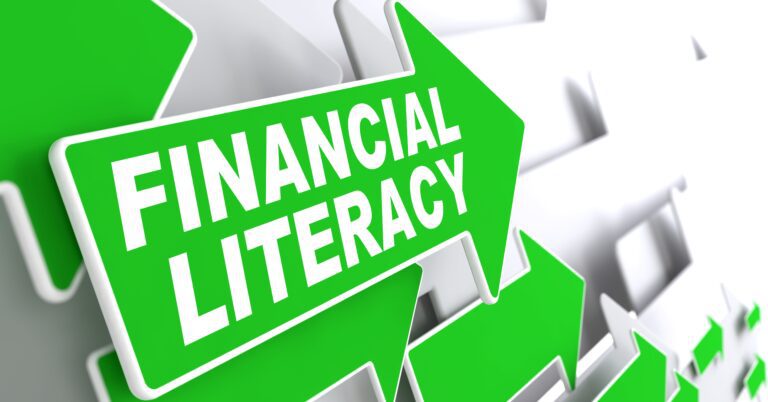An ABLE Account Helps Those With Disabilities Save
*Photo by Andre Taissin on Unsplash
by Steve W. Poehler
Have you heard of an “ABLE Account”? If not, you need to know what they are, as they can be a great way to save you money.
Officially, The Stephen Beck Jr. Achieving a Better Life Experience (ABLE) Act of 2014 was passed by Congress “to help blind or disabled people save money in a tax-favored ABLE account to maintain health, independence, and quality of life,” according to the IRS.
In layman’s terms, if you are blind or have a qualifying disability, then you can set up an ABLE Account and start receiving some great tax savings.
So how do these ABLE Accounts actually work?
THE NUTS AND BOLTS Of ABLE ACCOUNTS
The ABLE Act allowed states to create these tax-advantaged savings programs for eligible people with disabilities.
An ABLE Account is, as mentioned above, a tax-favored savings account that can accept contributions for an eligible “blind or disabled individual” who is the designated beneficiary and owner of the account. The account is then used “to provide for qualified disability expenses,” according to the IRS.
States administer the accounts, and they can be opened by qualified individuals themselves or by a family member of a disabled child, for example. One keynote—a designated beneficiary is limited to only one ABLE Account at a time.
Normally, total contributions in a given year to an ABLE Account are limited to the “annual gift-tax exclusion amount” (which is currently $15,000). But starting in 2018, if the beneficiary works, the beneficiary can also contribute part or all of their income to their ABLE Account – up to the poverty-line amount for a one-person household. (For 2018, this amount was $12,140 in the Continental United States and higher if you live in Hawaii or Alaska.) Remember, though, that you may not make this additional contribution if your employer contributes to a workplace retirement plan on your behalf.
ELIGIBILITY FOR AN ABLE ACCOUNT
The IRS allows you to establish an ABLE Account if your blindness or disability occurred before age 26.
You can have an ABLE Account if you are also entitled to benefits based on blindness or disability under Title II or Title XVI of the Social Security Act.
When opening an ABLE Account, you have to certify one of the following:
- You have a “medically determinable physical or mental impairment which results in marked and severe functional limitations.” (Not to get too morbid, but these limitations must be expected “to result in death” or to last “for a continuous period of at least 12 months,” per the IRS.); OR
- You are blind within the meaning of Section 1614(a)(2) of the Social Security Act.
THE FIRST ADVANTAGE
Even though contributions to an ABLE Account are not tax-deductible, all the earnings are tax-free. Also, and most importantly, when you take money out of the accounts (also called “distributions”), you are not taxed on these amounts.
To receive this tax-free treatment, however, these distributions must be used to pay for “qualified disability expenses,” which include housing, education, transportation, health, prevention and wellness, employment training and support, assistive technology, personal support services, and other disability-related expenses. As you can see, there are a wide range of eligible expenses, but for example, you probably cannot use the distributions to pay for tickets to a sporting event or your Netflix subscription—and if you do, you would need to pay taxes on those distributions.
THE SECOND ADVANTAGE
If you make eligible contributions to your ABLE Account, then you may claim a tax credit (a.k.a. “The Saver’s Credit”) on your income tax returns.
The amount of the credit goes up to $1,000 for filing single or up to $2,000 if filing jointly. (It is important to note that this credit is “non-refundable,” meaning if your tax liability is reduced to zero because of other credits, then you will not be entitled to The Saver’s Credit.)
There are a few other rules around The Saver’s Credit, such as you cannot be a full-time student, no one else can claim you as a dependent, and your income must be under $31,500 for single or $63,000 for married filing jointly.
ANOTHER ADVANTAGE
Another big plus to ABLE Accounts is the fact that the first $100,000 in this account is not treated as personal assets—meaning we disregard it for determining your eligibility for Supplemental Security Income (SSI) and certain other means-tested federal programs.
WHAT HAPPENS IF I LOSE MY ELIGIBILITY?
If you open an ABLE Account and later cease to be an eligible person (for example, your impairment goes into remission), then you cannot contribute to an ABLE Account beginning on the first day of the next year.
However, you do get to keep the ABLE Account, but any money (including earnings) you take out of the account while you are “ineligible” is likely subject to income tax.
As you can see, ABLE Accounts are a great option if you have a disability, or if you are a friend or family member of a disabled person. For more information on ABLE Accounts, including how to open one, visit the ABLE National Resource Center or your state’s ABLE Account website.
Steve Poehler is a father, a husband, and a huge sports fan. A former sports writer, Steve is now a CPA who spent five years working at a public accounting firm before becoming a Senior Financial Analyst for a nonprofit organization, the Catholic Archdiocese of Portland. Steve loves to work out, be outdoors, and follow sports, including his beloved Denver Broncos. Steve lives in Portland, Oregon, with his family.







